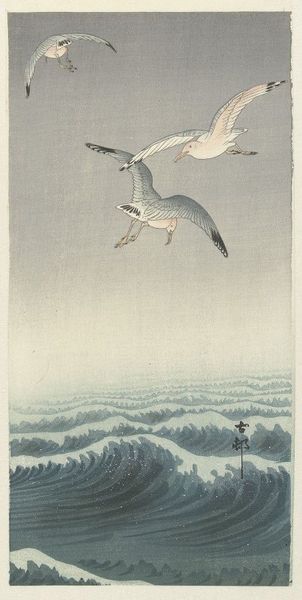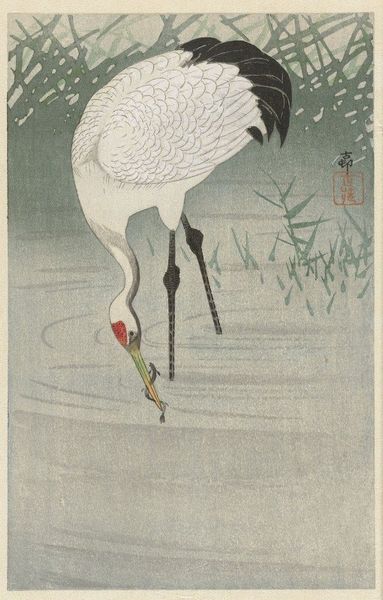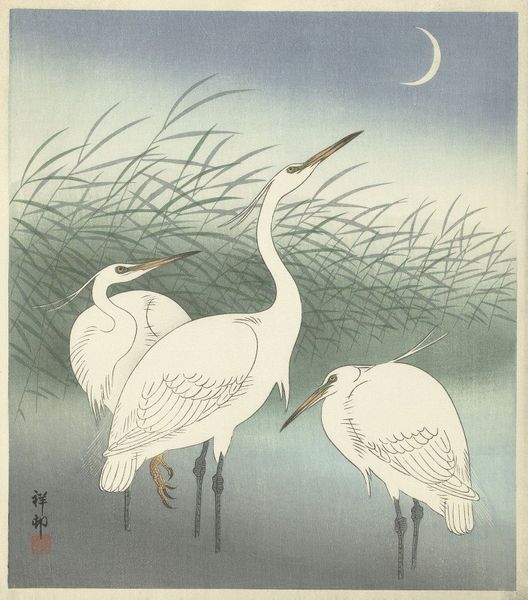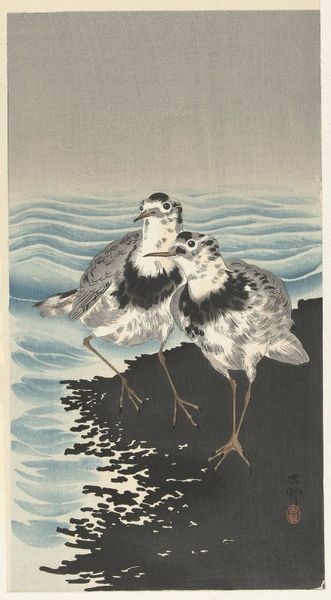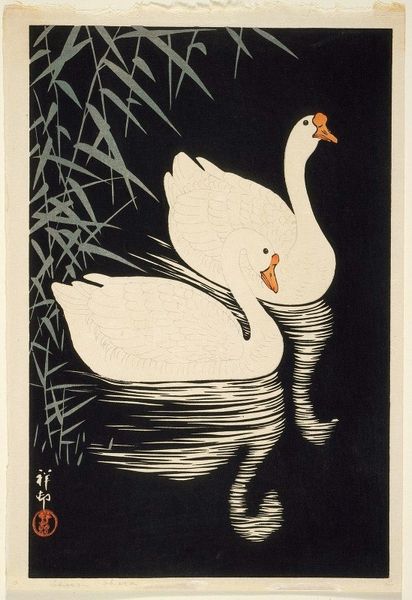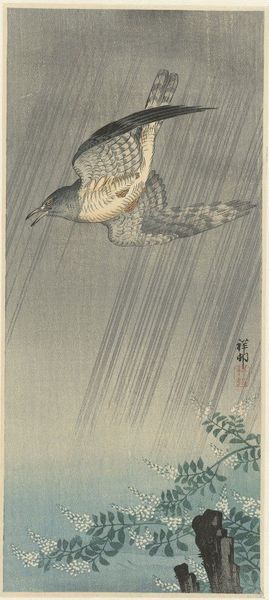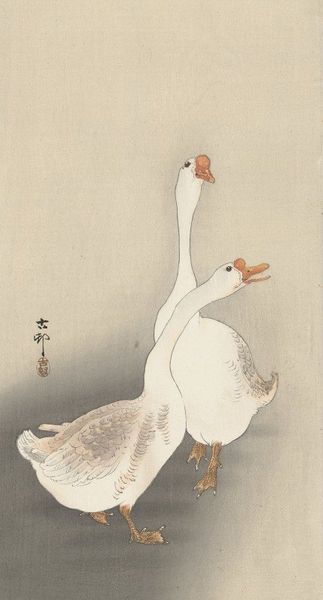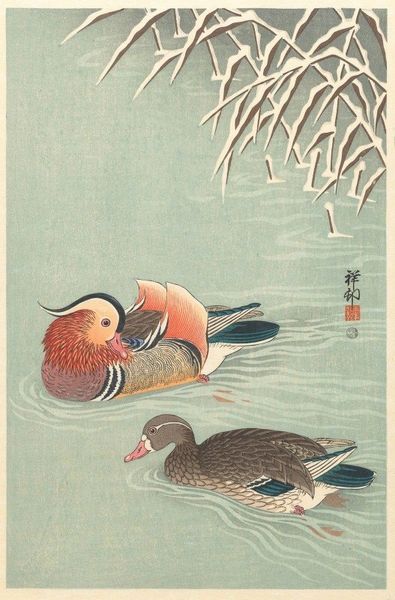
Copyright: Public Domain: Artvee
Curator: Right now we’re looking at “Geese on the Bank” by Ohara Koson, likely created sometime between 1900 and 1930. The piece, executed in watercolor, exemplifies the ukiyo-e style. Editor: It's immediately striking – the almost stark contrast of the geese against the water. There's a simplicity, almost a haiku in visual form, and a calming, reflective mood. Curator: Yes, it resonates with that quiet, introspective mood often associated with ukiyo-e. But beyond the aesthetic, it’s worth thinking about what geese represented during that era. Consider the social context. Were these seen as symbols of prosperity, or something else entirely? Editor: Traditionally, in many cultures, birds in general are messengers, bridging the earthly and spiritual realms. And geese specifically, because of their migratory patterns, could represent perseverance, navigation, even community. The pair here… there's a sense of interdependence. Curator: Exactly. And consider the gaze of the lower goose – almost searching. This raises broader questions about environmental representation within art. To what extent is the artist aware of—and responding to—contemporary shifts in attitudes toward the natural world and our interaction with animals? Editor: That subtle ripple effect the artist captures… the goose barely touching the water, yet the impact is clear. Water as a symbol of change, of the subconscious. It mirrors the animal's interior state and becomes a symbolic representation of human experience. The gray wash seems to mirror uncertainty too, what do you make of that? Curator: Yes, there is definitely a sense of transience suggested here by that restrained palette, which perhaps lends itself to broader narratives around shifting social and political landscapes prevalent in early twentieth century Japan. This period experienced growing Western influences challenging long-held artistic and cultural traditions. Editor: I see the delicate, symbolic language so clearly now! It makes the piece richer, knowing Koson subtly reflected his time in an image as ostensibly simple as two geese drinking. Curator: Absolutely. Considering both form and cultural context allows for richer dialogues about the image's resonance through time. Editor: Indeed, that initial feeling of serenity shifts towards something much deeper, prompting one to consider ideas related to animal and environmental change.
Comments
No comments
Be the first to comment and join the conversation on the ultimate creative platform.
